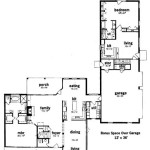Floor plans are diagrams that show the layout of a building, including the location of walls, doors, windows, and other features. They are essential for planning renovations, additions, or new construction, and can also be helpful for assessing the value of a property.
There are several places where you can get floor plans for your house. One option is to contact the original builder or architect. They may have a copy of the original plans on file.
Another option is to hire a surveyor or architect to create a new set of plans. This is a more expensive option, but it can be helpful if you need to make significant changes to your home or if the original plans are not available.
Here are 10 important points about where to get floor plans for your house:
- Contact the original builder or architect.
- Hire a surveyor or architect to create new plans.
- Check with your local planning department.
- Search for plans online.
- Ask your neighbors for copies of their plans.
- Look for plans in the deed or other property documents.
- Contact a real estate agent.
- Check with a local home improvement store.
- Use a floor plan software program.
- Create your own floor plans.
Once you have obtained floor plans for your house, you can use them to plan renovations, additions, or new construction. You can also use them to assess the value of your property.
Contact the original builder or architect.
If you are able to contact the original builder or architect of your home, they may have a copy of the floor plans on file. This is especially likely if your home was built within the last few decades. Builders and architects often keep digital copies of their plans, which makes it easy for them to provide you with a copy.
- Pros:
Original plans are likely to be the most accurate and detailed.
The builder or architect may be able to provide you with additional information about your home, such as the materials used in its construction.
- Cons:
The original builder or architect may not have a copy of the plans, especially if your home was built many years ago.
The builder or architect may charge a fee for providing you with a copy of the plans.
If you are unable to contact the original builder or architect, you can try contacting the local planning department. They may have a copy of the plans on file, especially if your home was built before the advent of digital record-keeping.
Hire a surveyor or architect to create new plans.
If you are unable to obtain a copy of the original floor plans for your house, you can hire a surveyor or architect to create a new set of plans. This is a more expensive option than obtaining a copy of the original plans, but it can be helpful if you need to make significant changes to your home or if the original plans are not available.
Surveyors and architects can use a variety of methods to create new floor plans. They may use laser scanners to create a 3D model of your home, or they may use traditional measuring techniques to create a 2D plan. Once they have created a model or plan, they can use computer software to add details such as walls, doors, windows, and other features.
New floor plans can be used for a variety of purposes, such as planning renovations, additions, or new construction. They can also be used to assess the value of your property.
Pros of hiring a surveyor or architect to create new plans:
- New plans will be accurate and detailed.
- Surveyors and architects can create plans that meet your specific needs.
- New plans can be used for a variety of purposes, such as planning renovations, additions, or new construction.
Cons of hiring a surveyor or architect to create new plans:
- This is a more expensive option than obtaining a copy of the original plans.
- It can take time for a surveyor or architect to create new plans.
If you are considering hiring a surveyor or architect to create new floor plans for your house, it is important to get quotes from several different professionals. You should also ask for references from past clients.
Check with your local planning department.
Your local planning department may have a copy of the floor plans for your house on file. This is especially likely if you live in a newer home or if your home has been remodeled or added to in recent years.
To obtain a copy of your floor plans from the planning department, you will typically need to submit a request in writing. You may also be required to pay a small fee. Once your request has been processed, the planning department will send you a copy of the floor plans.
There are several advantages to obtaining a copy of your floor plans from the planning department. First, the plans will be accurate and up-to-date. Second, the planning department may have access to plans that are not available from other sources. Third, the planning department may be able to provide you with additional information about your home, such as the date it was built and the materials used in its construction.
However, there are also some disadvantages to obtaining a copy of your floor plans from the planning department. First, the process can be time-consuming. Second, the planning department may not have a copy of the plans for your home, especially if your home is older.
Tips for obtaining floor plans from the planning department:
- Be prepared to provide the planning department with the address of your home and the name of the original owner.
- Be prepared to pay a small fee for the plans.
- Be patient. It may take some time for the planning department to process your request.
Search for plans online.
There are a number of websites where you can search for floor plans online. Some of these websites offer free plans, while others charge a fee. When searching for plans online, it is important to use specific keywords, such as the type of house you have, the number of bedrooms and bathrooms, and the square footage. You can also use filters to narrow your search results.
One of the most popular websites for finding floor plans online is Houzz. Houzz has a database of over 2 million floor plans, and you can search for plans by style, size, and other criteria. Houzz also offers a number of tools that you can use to create your own floor plans.
Another popular website for finding floor plans online is Floor Plan Catalog. Floor Plan Catalog has a database of over 100,000 floor plans, and you can search for plans by style, size, and other criteria. Floor Plan Catalog also offers a number of tools that you can use to create your own floor plans.
If you are unable to find the floor plans you are looking for online, you can try contacting a local architect or builder. Architects and builders often have access to a wider range of floor plans than what is available online.
Once you have found the floor plans you are looking for, you can download them and print them out. You can also use a software program to view and edit the plans.
Ask your neighbors for copies of their plans.
If you live in a neighborhood with similar homes, you may be able to get a copy of your floor plans from one of your neighbors. This is especially likely if your homes were built around the same time and by the same builder.
To ask your neighbors for a copy of their floor plans, you can simply knock on their door and introduce yourself. Explain that you are looking for a copy of the floor plans for your home, and ask if they would be willing to share a copy with you.
If your neighbors are not home, you can leave a note with your contact information. You can also try contacting your neighbors through a neighborhood social media group or email list.
If you are able to get a copy of your floor plans from a neighbor, be sure to thank them for their help. You may also want to offer to return the favor in the future.
There are several advantages to getting a copy of your floor plans from a neighbor. First, the plans will be accurate and up-to-date. Second, you will be able to see how the plans have been modified over time. Third, you may be able to get ideas for how to improve your own home.
Look for plans in the deed or other property documents.
The deed to your house is a legal document that describes the property, including its size, location, and ownership history. The deed may also include a copy of the floor plans for the house. If the deed does not include the floor plans, you may be able to find them in other property documents, such as the title insurance policy or the mortgage documents.
- Pros:
The floor plans in the deed or other property documents will be accurate and up-to-date.
You will not need to pay any fees to obtain the plans.
- Cons:
The deed or other property documents may not include the floor plans.
The floor plans in the deed or other property documents may be difficult to read or understand.
If you are unable to find the floor plans for your house in the deed or other property documents, you can try contacting the original builder or architect. They may have a copy of the plans on file.
Contact a real estate agent.
If you are selling or buying a house, the real estate agent may have a copy of the floor plans. Real estate agents often keep copies of floor plans for properties that they have listed or sold.
- Pros:
The real estate agent may have a copy of the floor plans, even if you are not selling or buying a house.
The real estate agent may be able to provide you with additional information about the property, such as the date it was built and the materials used in its construction.
- Cons:
The real estate agent may not have a copy of the floor plans, especially if the property is older.
The real estate agent may charge a fee for providing you with a copy of the floor plans.
If you are considering contacting a real estate agent for a copy of your floor plans, it is important to interview several different agents before making a decision. You should also ask for references from past clients.
Check with a local home improvement store.
Many local home improvement stores have a selection of floor plans that you can purchase. These plans are typically designed by architects and engineers, and they are available in a variety of styles and sizes. You can find plans for small homes, large homes, and everything in between. Some home improvement stores also offer custom floor plan design services.
- Pros:
Floor plans from home improvement stores are relatively inexpensive.
You can choose from a wide variety of plans.
Home improvement stores often offer custom floor plan design services.
- Cons:
Floor plans from home improvement stores may not be as detailed as plans from an architect or engineer.
You may need to modify the plans to fit your specific needs.
If you are considering purchasing floor plans from a home improvement store, it is important to do your research. Read reviews of the store and the plans that you are considering. You should also compare prices from different stores.
Once you have purchased floor plans from a home improvement store, you can use them to plan renovations, additions, or new construction. You can also use them to assess the value of your property.
- Tips for using floor plans from a home improvement store:
Review the plans carefully before you start construction.
Make sure that the plans meet your specific needs.
Get permits from the local planning department before you start construction.
Hire a qualified contractor to build your home or addition.
Floor plans from a home improvement store can be a valuable resource for homeowners who are planning to renovate, add to, or build a new home. By following the tips above, you can use these plans to create a beautiful and functional home.
In addition to the tips above, here are a few other things to keep in mind when using floor plans from a home improvement store:
- Make sure that the plans are up-to-date. Building codes and regulations change over time, so it is important to make sure that the plans you are using are up-to-date.
- Consider your budget. Floor plans can vary in price, so it is important to consider your budget when choosing a plan.
- Get help from a professional. If you are not comfortable reading and understanding floor plans, you can get help from a professional, such as an architect or engineer.
Use a floor plan software program.
Floor plan software programs allow you to create and edit floor plans for your home. These programs are available for both Windows and Mac computers, and there are both free and paid versions available. Some popular floor plan software programs include AutoCAD Architecture, Chief Architect, and SketchUp.
Floor plan software programs offer a variety of features that can help you create accurate and detailed floor plans. These features include:
- The ability to draw walls, doors, windows, and other features to scale.
- The ability to add furniture and other objects to your floor plan.
- The ability to create 3D models of your floor plan.
- The ability to export your floor plan to a variety of file formats, including PDF, JPG, and DWG.
Floor plan software programs can be a valuable resource for homeowners who are planning to renovate, add to, or build a new home. By using a floor plan software program, you can create a detailed and accurate plan that will help you visualize your project and make informed decisions.
If you are considering using a floor plan software program, it is important to do your research to find a program that meets your needs. There are many different floor plan software programs available, and each program has its own unique features and capabilities. Once you have found a program that you are comfortable with, you can start creating your floor plan.
To create a floor plan using a floor plan software program, you will need to start by drawing the walls of your home. Once you have drawn the walls, you can add doors, windows, and other features. You can also add furniture and other objects to your floor plan to help you visualize your project.
Once you have created a floor plan, you can export it to a variety of file formats, including PDF, JPG, and DWG. You can then use these files to share your floor plan with others or to get permits from the local planning department.
Floor plan software programs can be a valuable resource for homeowners who are planning to renovate, add to, or build a new home. By using a floor plan software program, you can create a detailed and accurate plan that will help you visualize your project and make informed decisions.
Create your own floor plans.
If you are unable to obtain a copy of your floor plans from any of the sources listed above, you can create your own floor plans. This is a more time-consuming option, but it can be a good way to get exactly the plans you want.
To create your own floor plans, you will need to measure your home and draw a scale drawing of each room. You can use a tape measure and a pencil and paper, or you can use a laser measuring tool and a computer-aided design (CAD) program.
Once you have drawn a scale drawing of each room, you can assemble them into a complete floor plan. You can use a CAD program to create a digital floor plan, or you can simply tape the drawings together.
Once you have created a floor plan, you can use it to plan renovations, additions, or new construction. You can also use it to assess the value of your property.
Here are a few tips for creating your own floor plans:
- Start by measuring the exterior of your home. This will give you the overall dimensions of your home and help you to determine the scale of your drawings.
- Measure each room individually. Be sure to measure the length, width, and height of each room.
- Draw a scale drawing of each room. Be sure to include all of the doors, windows, and other features in each room.
- Assemble the drawings into a complete floor plan. You can use a CAD program to create a digital floor plan, or you can simply tape the drawings together.
- Review your floor plan carefully. Make sure that all of the measurements are accurate and that all of the features are included.
Creating your own floor plans can be a time-consuming process, but it can be a good way to get exactly the plans you want. By following the tips above, you can create a detailed and accurate floor plan that will help you to plan your home improvement projects and make informed decisions about your property.










Related Posts








